Search Images
Browse Content (p. 1121)
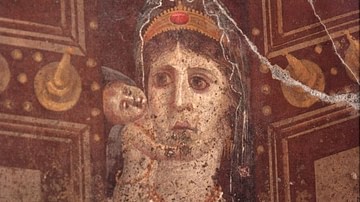
Image
Mural of Cleopatra and Caesarion as Venus and Cupid
This mid-1st Century BCE mural portrays a statue of Venus and the infant Cupid in the Temple of Venus Genitrix, Rome. The statue has been identified as the infamous gilded statue of Cleopatra VII as Venus that Julius Caesar unveiled during...
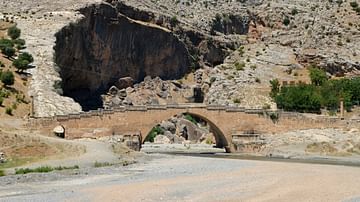
Image
Severan Bridge
The Severan Bridge (also known as Cendere Bridge) is a Roman bridge located near the ancient city of Arsameia (today Eskikale), 55 km (34 miles) north east of Adıyaman in southeastern Turkey. It spans the Cendere Çayı river, which was known...
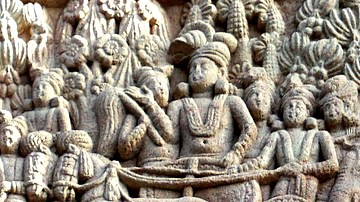
Image
Ashoka
Ashoka riding a chariot in a relief from the Sanchi Stupa, Madhya Pradesh, India. Emperor Ashoka the Great (sometimes spelt Aśoka) lived from 304 to 232 BCE and was the third ruler of the Indian Mauryan Empire.
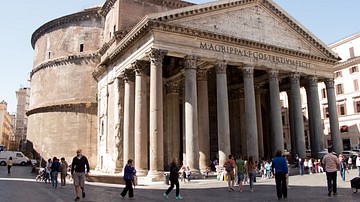
Image
Rome's Pantheon
The Pantheon of Rome, completed in c. 125 CE under the reign of Hadrian. The exact function of the building in antiquity is not known, no other example is known in Rome of a temple to all the gods (as its name suggests) and it was, therefore...
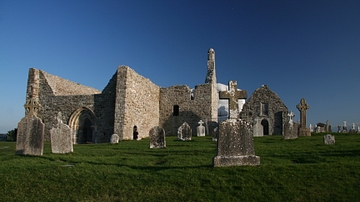
Image
Clonmacnoise
The abbey of Clonmacnoise, Ireland.
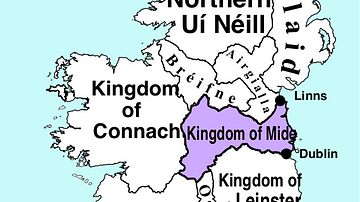
Image
Ireland c. 900 CE
Map of Ireland, c. 900 CE.
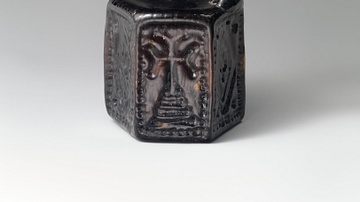
Image
Byzantine Hexagonal Jug
Created in the 6th or 7th century CE, this moulded glass jug measures 15.1 x 8.6 x 7.5 cm. This photo shows a stepped cross, representing one constructed at the site of Jesus' crucifixion by Thoedosius II. The relief designs were produced...
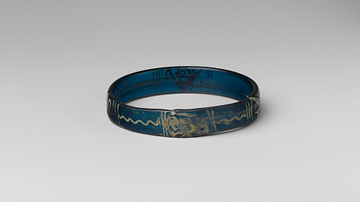
Image
Byzantine Bracelet with Birds and Geometric Patterns
Created sometime between 1100-1400 CE, this Byzantine bracelet is made of glass and a silver stain. It measures 7.5 x 1.4 x 0.4 cm. (Metropolitan Museum of Art, New York)
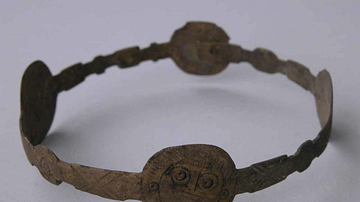
Image
Byzantine Copper-Alloy Bracelet
Crafted sometime between the 6th-8th centuries CE, this bracelet comprises four linked medallions. Decorations include concentric geometric figures (very popular in Byzantine art), along with a woman's face, a fish, a boat and an inscription...
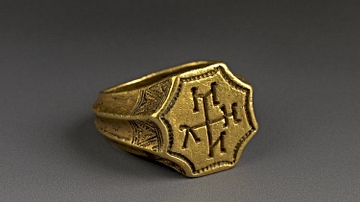
Image
Byzantine Signet Ring
Gold signet ring with fluted loop. The octagonal bezel is engraved with the name Manuel, in Greek. Diameter: 26.5 mm. Length: 11.3 mm. Weight: 13.7 g. (British Museum, London)